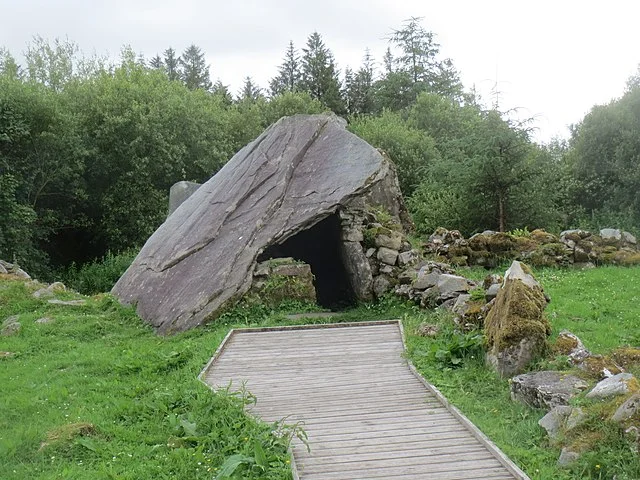The Calf House Portal Tomb, a Neolithic structure, stands as a remarkable remnant of Ireland’s ancient history. Located in County Clare, Ireland, this portal tomb is an important archaeological site that provides insight into burial practices and beliefs of the region’s early inhabitants.
Get your dose of History via Email
Structure and Design
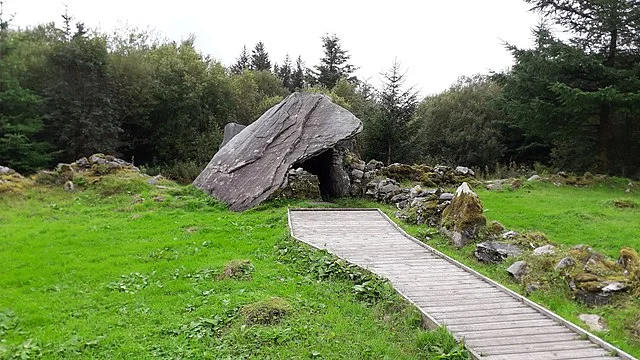
The tomb’s design follows the traditional features of portal tombs, with a capstone supported by upright stones known as portal stones. These stones create a chamber beneath, where remains and artifacts would have been placed. The capstone is large, flat, and rests on the vertical portal stones, forming a distinctive sloping shape typical of portal tombs. The chamber’s construction reflects the skill of early builders who used large stones to create a stable burial space without mortar.
This design and structure served both functional and symbolic purposes. The portal stones provided the tomb with an imposing entrance, while the capstone offered a protective covering for the burial chamber. This design suggests a deep respect for the deceased and a belief in an afterlife.
Historical Significance and Age
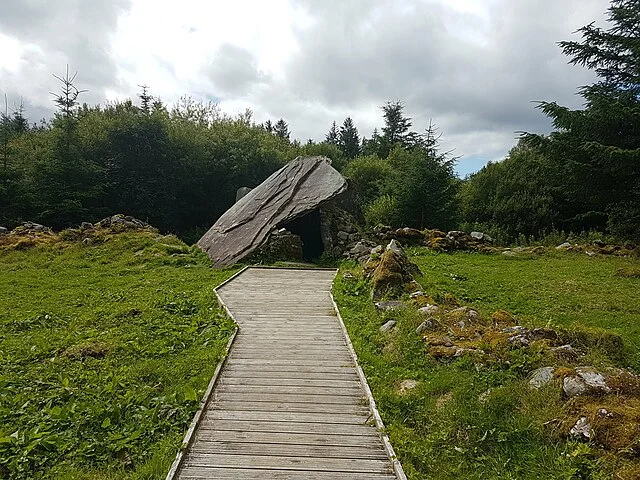
Calf House Portal Tomb dates back to the Neolithic period, approximately 4000 to 2500 BC. This period in Irish history marks a time of significant development, including advances in agriculture and the construction of monumental architecture. Portal tombs like Calf House are some of the earliest stone structures in Ireland and provide evidence of the culture and social practices of the era.
Neolithic communities built these tombs with considerable effort, indicating that the people buried here held a special status. The tomb’s orientation, often aligned with natural landmarks, reveals a sophisticated understanding of the landscape.
Archaeological Findings
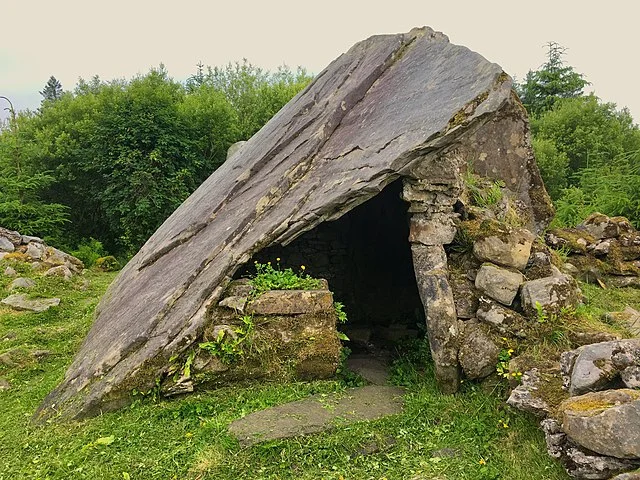
Archaeologists have found a variety of artifacts in portal tombs similar to Calf House, including pottery fragments, stone tools, and personal ornaments. These findings help scholars piece together information about the lives and beliefs of Ireland’s Neolithic inhabitants. The burial practices observed in these tombs suggest a communal approach, where multiple individuals were interred over time. Such practices highlight the social and familial connections valued in these early communities.
However, due to the passage of time and the tomb’s exposed location, fewer artifacts remain at Calf House itself. Environmental factors and human interaction over the centuries have contributed to the loss of materials within the tomb. Despite this, the tomb remains a critical example of early burial structures in Ireland.
Preservation and Research
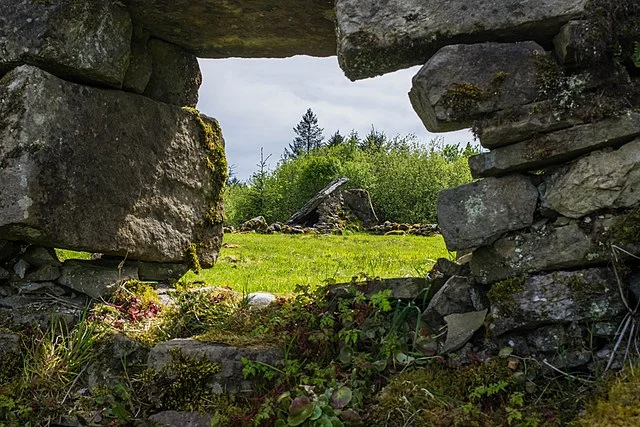
The preservation of the Calf House Portal Tomb is essential for understanding Ireland’s prehistoric past. However, like many ancient sites, it faces challenges from natural erosion and potential vandalism. Ireland’s temperate climate and the tomb’s exposed setting contribute to gradual weathering, which may threaten the stability of the stone structure over time.
Researchers and local authorities emphasize the importance of conserving this portal tomb as part of Ireland’s cultural heritage. Ongoing research and archaeological surveys aim to gather more information about the tomb and its significance. The findings contribute to broader studies on Neolithic Ireland and the spread of megalithic structures across Europe.
Conclusion
Calf House Portal Tomb offers valuable insight into Ireland’s ancient history and the spiritual beliefs of its early inhabitants. Through its design, construction, and historical context, this tomb exemplifies the communal and ceremonial practices of the Neolithic period. Preserving such sites ensures that future generations can continue to learn about and appreciate Ireland’s prehistoric heritage.
Source:

